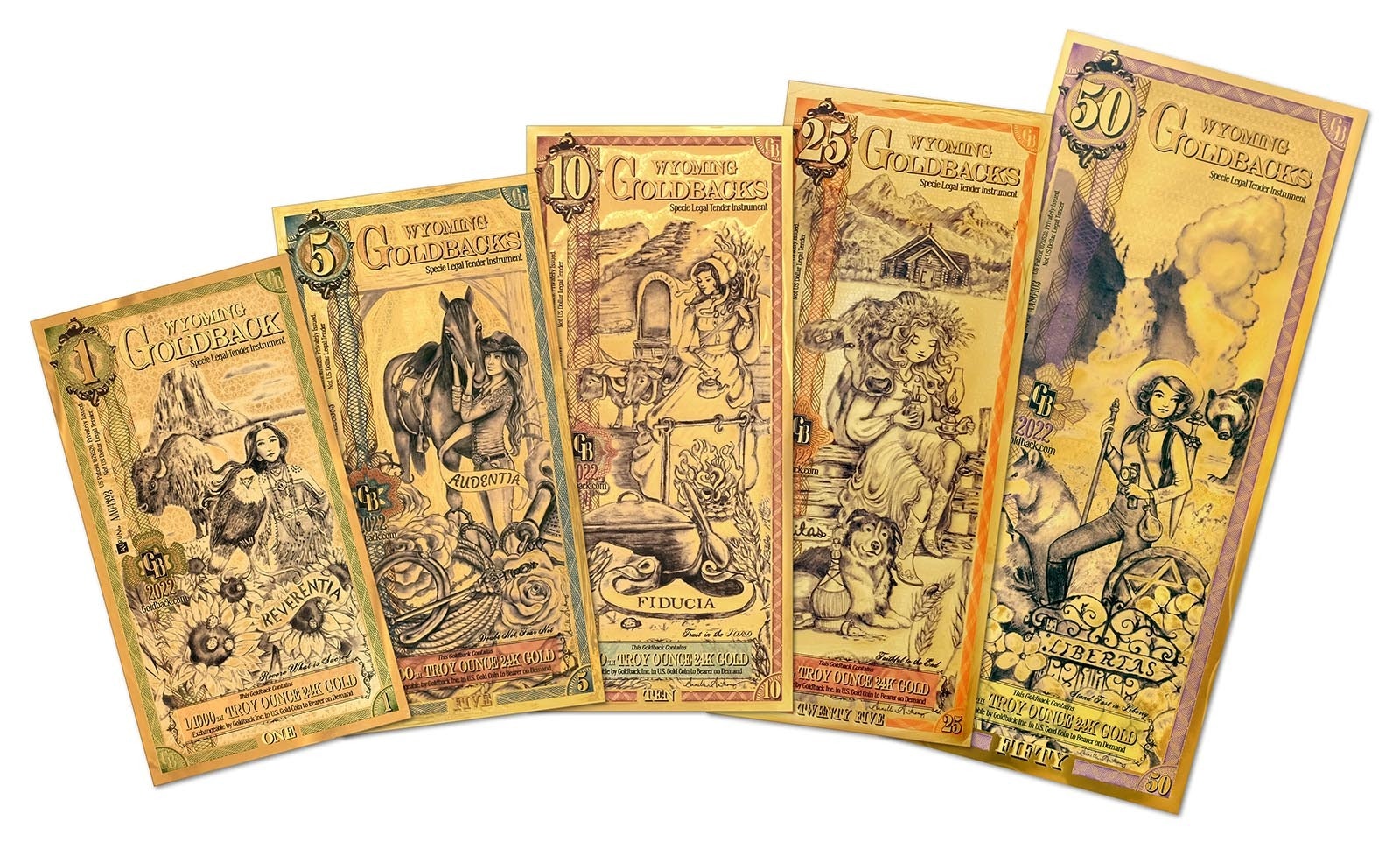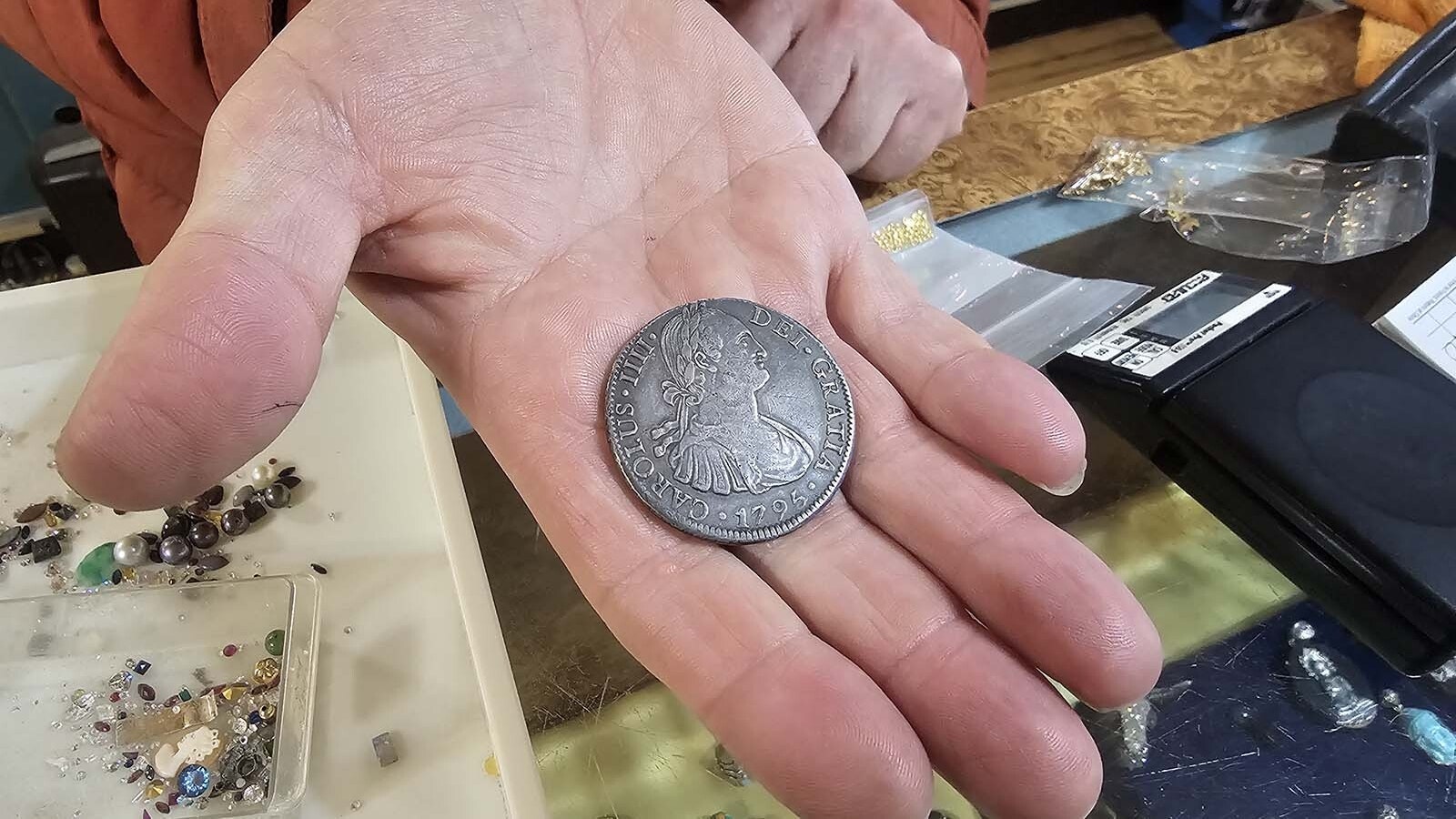A private currency company is hoping its new Wyoming currency has the Midas touch for users.
Utah-based Goldback Inc. has released a Wyoming Series of its Goldback bills printed with physical gold in the currency, which the company says makes its value more stable than the U.S. dollar.
Nearly 40 Cowboy State businesses are featured on the company’s website as expressing interest in accepting Wyoming Goldbacks.
Trying to make purchases with actual gold runs into a few impracticalities. If you plopped down an ounce of gold to buy groceries — putting aside the fact that businesses don’t accept gold as payment — that ounce of gold is worth nearly $2,000. Shaving that down to pay for $100 worth of groceries isn’t easy.
Kevan Mills, director of sales and marketing for Goldbacks Inc., said that if such a payment system were available, consumers would find that the amount of groceries they could buy wouldn’t require ever larger quantities of gold every month, as is the case with traditional U.S. currency.
Mills said that for someone trying to buy a tailored suit in 1940, it would cost you about $30. Today, that same suit would cost potentially $2,000.
“If you purchased a suit in 1940 with gold, it would cost you 1 ounce of gold. If you buy a tailored suit today with gold, it will cost you 1 ounce of gold,” Mills said.
The value of the gold more or less stayed the same. It’s the dollar that lost value.
At about $4 per small bill, Mills said the currency also is accessible to someone making minimum wage while trying to start a savings program.

Atomized Gold
In spring 2019, Jeremy Cordon, president and founder of Goldbacks Inc., began working on a way that small consumer purchases could be made with physical gold.
Buying a pack of gum could cost a couple bucks. In physical gold, that’s about a sixth the size of a BB from a BB gun.
“No one could ever weigh it. No one can ever verify its purity,” he said. “So, in raw gold form, you can’t circulate it because it just doesn’t make sense.”:
That’s where the Goldback comes in. Goldbacks are bills you can put into your wallet. The bill with the least amount of gold contains 1/1000th of an ounce, but they also come with larger amounts of gold. The bill has a layer of polymer with all the artwork on it, as well as six anti-counterfeiting measures, Mills said.
The gold is atomized and layered onto the polymer “literally atom by atom,” Mills said.
There’s a second layer of polymer on the back, and the whole thing is vacuum sealed, with several patents on the process. Before the bills are sent out to buyers, there’s a third-party verification process to ensure the weight of gold on the artwork matches the weight of gold in the bill. That means the bills don’t have a dollar value, which changes. They have a constant gold content amount.
Mills said the bills feel a lot like a crisp new dollar bill and measure about 5 inches by 2.5 inches.
For consumers to use Goldbacks as a medium of exchange, Goldback Inc. maintains a calculator on its website so buyers can translate the Goldbacks in their wallets to the value of purchases.

Gold Standard
At one time, American dollars were on a gold standard, meaning that every dollar in circulation was backed up by physical gold the federal government held. In the 1930s, that system was abandoned, and the U.S. ended the last remnants of the system in the 1970s. Today, no country uses the system.
All American dollars have been replaced by government order, also called fiat, which means the government requires the currency be accepted as a means of payment.
So, when the Federal Reserve wants to stimulate the economy, it pours more money into its member banks.
The unpleasant side effect of this system is that as more money flows into the economy, it increases the demand for goods and services. Businesses then respond to the higher demand and shrinking supply by raising prices, which drives inflation.
“What people don’t understand is that inflation is the highest tax on the American consumer,” Mills said.
Rather than holding gold in a vault and printing money that is backed by that gold, the Goldback Inc. founders decided putting gold in the bills would allow the consumer to hold the physical gold in their hands.
An Intriguing Concept
This is what got Michael Newquist, owner of Patriot Diesel Repair in Casper, interested. He’s signed his business up as one of those that accept Goldbucks for payment.
Before Goldbacks released their Wyoming version, Newquist contacted the company to see about using the currency at his business. He’s had it on his website since then, and said he’s been watching the currency in its development since, including the release of the Wyoming series.
“It’s definitely stable, and it’s not fiat like all this currency we have now,” Newquist said, adding he hasn’t had any customers try to pay with Goldbacks so far.
Greybull-based Marshall Antiques and Estates is another company featured on the Goldback site as a company accepting the currency. Co-owner Tim Marshall said that while he’s very interested in Goldbacks, he’s still researching their potential. Salespeople from Goldbacks approached him at a gun show, and he wanted more information.
“That’s what piqued our interest about it was that it …is more about individual control rather than collective control,” Marshall said.
Marshall said his business does a lot through barter and another way to make exchanges might come in handy someday.
“We’ll research things really intently before we make a decision on it,” Marshall said.
Independence Money
The Wyoming series of the bills, Mills said, is just like the state quarters that the U.S. government minted from 1999 to 2008. They can be spent in any state at businesses that accept the currency. The artwork just has a Wyoming theme.
Mills said that besides having a currency whose value is resistant to downward pressure from inflation, it’s about liberty.
“Every time we … spend a fiat currency, we’re giving away a little bit of our power to government control,” Mills said.
The company said it’s gone to great lengths to make sure it’s conducting itself within the law. It also is trying to avoid mistakes that other private currency companies have made, such as the infamous American Liberty Dollar, which sold “warehouse receipts” to physical silver and gold that were intended to be owned by the bearer of the receipt.
The company ceased operations in 2009 and its founders were charged with federal crimes in connection with the Liberty Dollar.
“We knew what happened to the Liberty Dollar, so we committed ourselves to studying that event so that we could avoid every mistake they made,” Cordon said on a blog about the company’s development.





